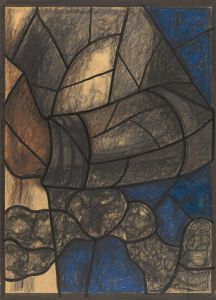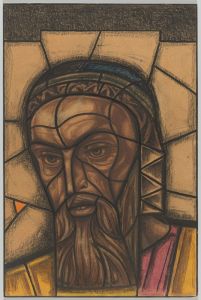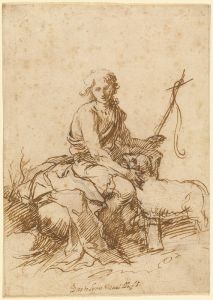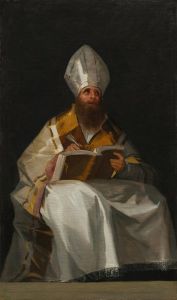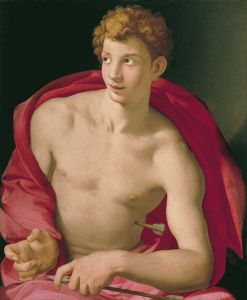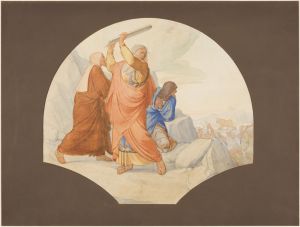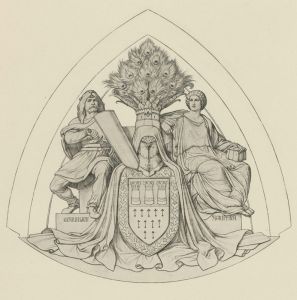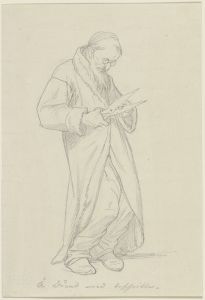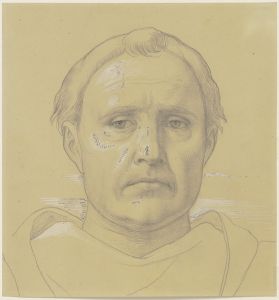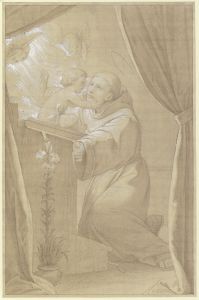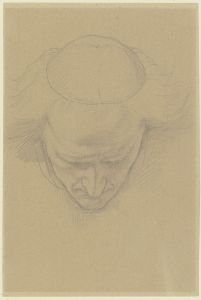
Moses
A hand-painted replica of Eduard von Steinle’s masterpiece Moses, meticulously crafted by professional artists to capture the true essence of the original. Each piece is created with museum-quality canvas and rare mineral pigments, carefully painted by experienced artists with delicate brushstrokes and rich, layered colors to perfectly recreate the texture of the original artwork. Unlike machine-printed reproductions, this hand-painted version brings the painting to life, infused with the artist’s emotions and skill in every stroke. Whether for personal collection or home decoration, it instantly elevates the artistic atmosphere of any space.
Eduard von Steinle was a notable 19th-century German painter, recognized for his contributions to the Nazarene movement, which sought to revive honesty and spirituality in Christian art. One of his works, "Moses," reflects his dedication to religious themes and his skill in depicting biblical narratives.
Eduard von Steinle was born on July 2, 1810, in Vienna, Austria. He was initially trained in Vienna and later moved to Germany, where he became associated with the Nazarene movement. This group of artists aimed to return to the art of the Middle Ages and early Renaissance, emphasizing religious subjects and a detailed, clear style. Steinle's work is characterized by its spiritual depth and meticulous attention to detail, which is evident in his painting "Moses."
"Moses" by Eduard von Steinle is a representation of the biblical figure Moses, a central prophet in Judaism, Christianity, and Islam. Although specific details about this particular painting are scarce, Steinle's approach to religious subjects typically involved a deep exploration of the spiritual and moral dimensions of his characters. His works often depicted scenes from the Bible with a focus on conveying the emotional and spiritual essence of the narratives.
In his depiction of Moses, Steinle would likely have drawn upon the traditional iconography associated with the prophet. Moses is often portrayed with the Tablets of the Law, representing the Ten Commandments, which he received from God on Mount Sinai. This moment is one of the most significant in the biblical account of Moses, symbolizing the covenant between God and the Israelites. Steinle's painting might capture this pivotal event, emphasizing Moses's role as a lawgiver and leader.
Steinle's style is marked by its clarity and precision, qualities that align with the Nazarene movement's ideals. His use of color and composition would have been carefully considered to enhance the narrative and spiritual impact of the scene. The Nazarenes were known for their use of bright, clear colors and a linear style that harkened back to the works of early Renaissance artists like Fra Angelico and Perugino. Steinle's "Moses" would likely reflect these influences, presenting a scene that is both visually striking and rich in symbolic meaning.
Eduard von Steinle's contribution to religious art in the 19th century is significant, as he helped to revive interest in spiritual themes during a time when art was increasingly focused on realism and secular subjects. His works, including "Moses," continue to be appreciated for their spiritual depth and artistic excellence.
While specific information about the painting "Moses" is limited, Eduard von Steinle's broader body of work provides insight into his approach to religious art. His paintings are celebrated for their ability to convey profound spiritual truths through meticulous craftsmanship and a deep understanding of biblical narratives.





